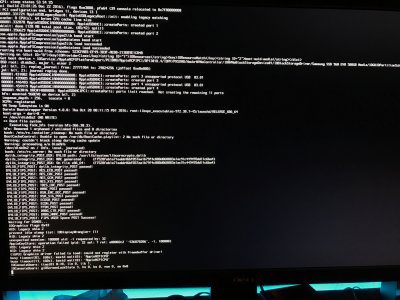- Joined
- Jan 27, 2017
- Messages
- 29
- Motherboard
- Gigabyte GA-Z170X-UD3
- CPU
- i7 6700k
- Graphics
- MSI Radeon RX 480 Gaming X 8G & Intel HD
I couldn't do that, because I couldn't get into Sierra to copy the EFI/clover..No EFI/Clover attached.
Just did a fresh install again. Could my mistake be that im using:
// Inject bogus class-code for NVMe SSD to prevent IONVMeFamily.kext from loading
DefinitionBlock("", "SSDT", 2, "hack", "NVMe-Pcc", 0)
{
External(_SB.PCI0.P0P4, DeviceObj)
Device(_SB.PCI0.P0P4.SSD0) { Name(_ADR, 0) } // adding SSD0 identity under _SB.PCI0.P0P4
Method(_SB.PCI0.P0P4.SSD0._DSM, 4)
{
If (!Arg2) { Return (Buffer() { 0x03 } ) }
Return(Package()
{
"class-code", Buffer() { 0xff, 0x08, 0x01, 0x00 },
"built-in", Buffer() { 0 },
})
}
}
//EOF
Your guide mentions that the code below is for Special injections required for 10.11.x and Samsung 960 EVO. I ignored this code because I'm on 10.12.3. Could this be the problem? That im supposed to use the bottom one instead of the top one? If I enter the bottom code in MaciASL and compile, ill get an error. "Input file does not appear to be an ASL or data table source file".
// Inject bogus class-code for NVMe SSD to prevent IONVMeFamily.kext from loading
// also inject "compatible", "IOName", and "name" such that 10.11.x IONVMeFamily
// does not match on pci144d,a804 (Samsung 960 EVO)
DefinitionBlock("", "SSDT", 2, "hack", "NVMe-Pcc", 0)
{
External(_SB.PCI0.RP13.PXSX, DeviceObj)
Method(_SB.PCI0.RP13.PXSX._DSM, 4)
{
If (!Arg2) { Return (Buffer() { 0x03 } ) }
Return(Package()
{
"class-code", Buffer() { 0xff, 0x08, 0x01, 0x00 },
"built-in", Buffer() { 0 },
"compatible", Buffer() { "pci144d,a801" },
"IOName", "pci144d,a801",
"name", Buffer() { "pci144d,a801" },
})
}
}
//EOF
Last edited:


